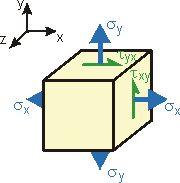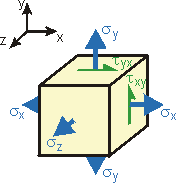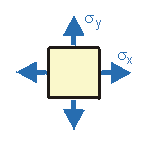General Stress | General Strain | Plane Stress | Plane Strain | Special Cases



| 3.3 General Stress and Strain General Stress | General Strain | Plane Stress | Plane Strain | Special Cases |



|
|
» Plane Stress
The non-zero strains under Plane Stress are then:
|

|
|
» Plane Strain
The non-zero strains under Plane Strain are then:
|
 |
|
» Special Cases (Click on description to see illustration)
|

|

|



|